LoamLab Components Grips and Counterpunch
Reviewer: 5’9”, 170 lbs / 175 cm, 77.1 kg
Stated Features:
- Grips feature a re-shaped inner core
- Grips utilize eccentrically placed rubber material for increased comfort
- Grips maintain a thin 29mm diameter
- Grips weigh 110g per pair
- Counterpunch is made from METAL
- Counterpunch protects the 5th digit and metacarpal of your hand from impacts
- Counterpunch design encourages fewer bar hangups after impact
- Counterpunch affords more hand positions on bar and grips
- Counterpunch is also compatible with ODI dual clamp grips
- Counterpunch weighs 68g per pair
MSRP:
- Counterpunch only (no grips): $39 CAD
- Counterpunch and grips: $59 CAD
- Replacement grips (no clamps or Counterpunch): $18 CAD
Test Location: Gunnison Valley, CO
Test Duration: ~4 months
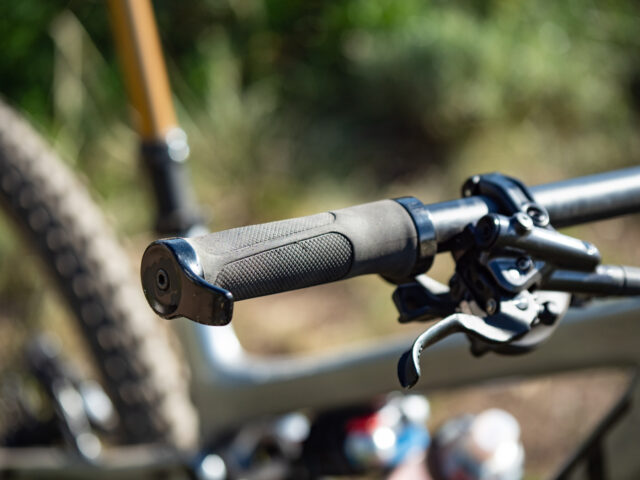
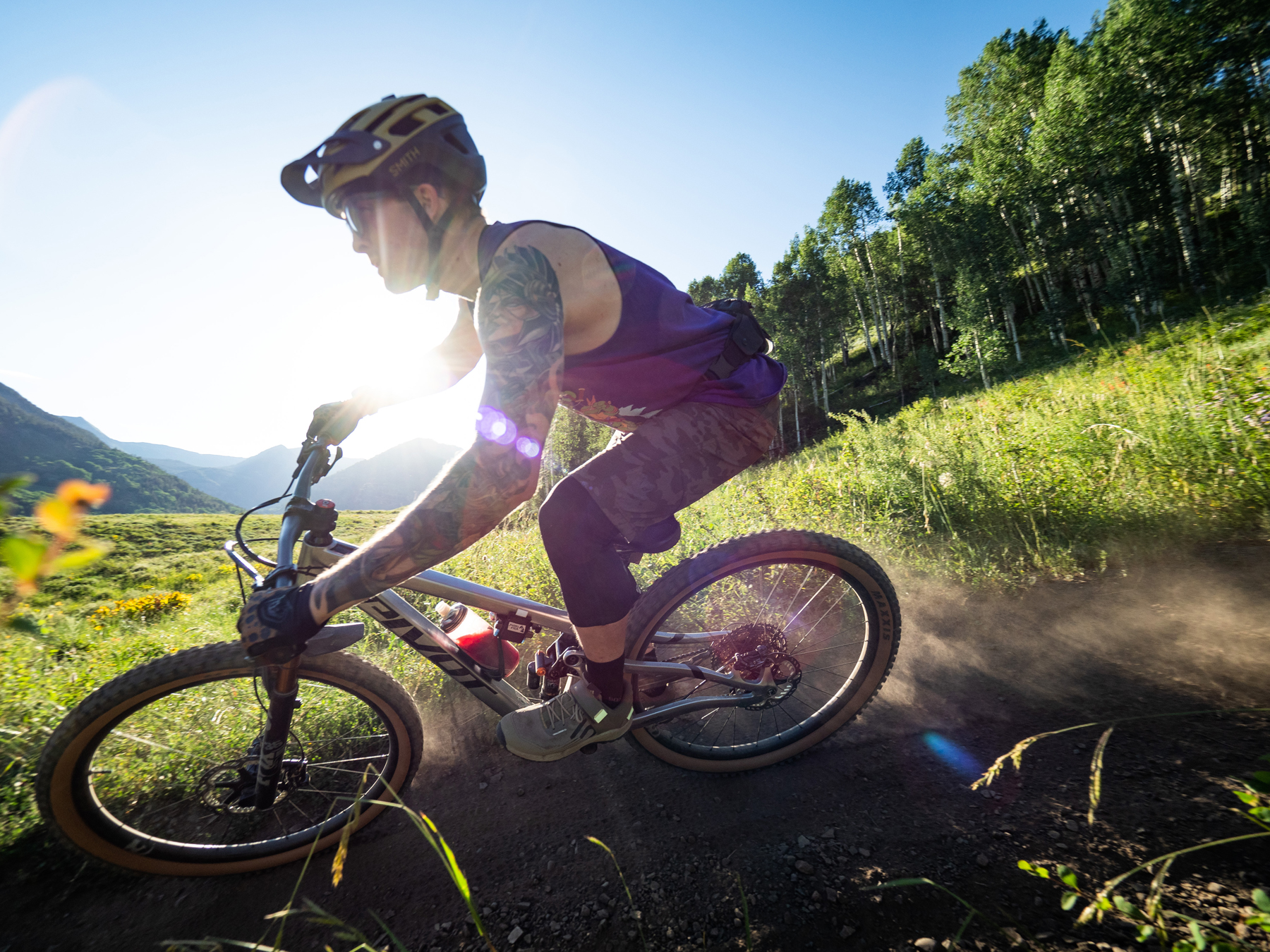
Design
The Counterpunch looks a little bit like the world’s smallest bar end — it’s basically an outer grip clamp with a small aluminum prong that extends forward and partially wraps around your pinkie finger to offer a bit of protection from glancing blows off of trees and the like. The Counterpunch is designed to be run with LoamLab’s own grips (more on those in a minute), but it’s also compatible with any dual-clamp ODI-style grip (by replacing the outer clamp with the Counterpunch), or on its own with your open-ended grip of choice.
It was the Counterpunch that drew my attention to LoamLab in the first place, but their grips are pretty nice, too. They feature rubber material that is placed eccentrically (rather than perfectly concentric) to the bar to improve extra cushioning where it’s needed without increasing the diameter of the grips, and an overall smooth texture with a bit of knurling. Both the LoamLab grip and Counterpunch bring a bit of innovation to an often overlooked but very important part of your bike. Necessary? Maybe not, but they’re good ideas that have use and place in the MTB space.
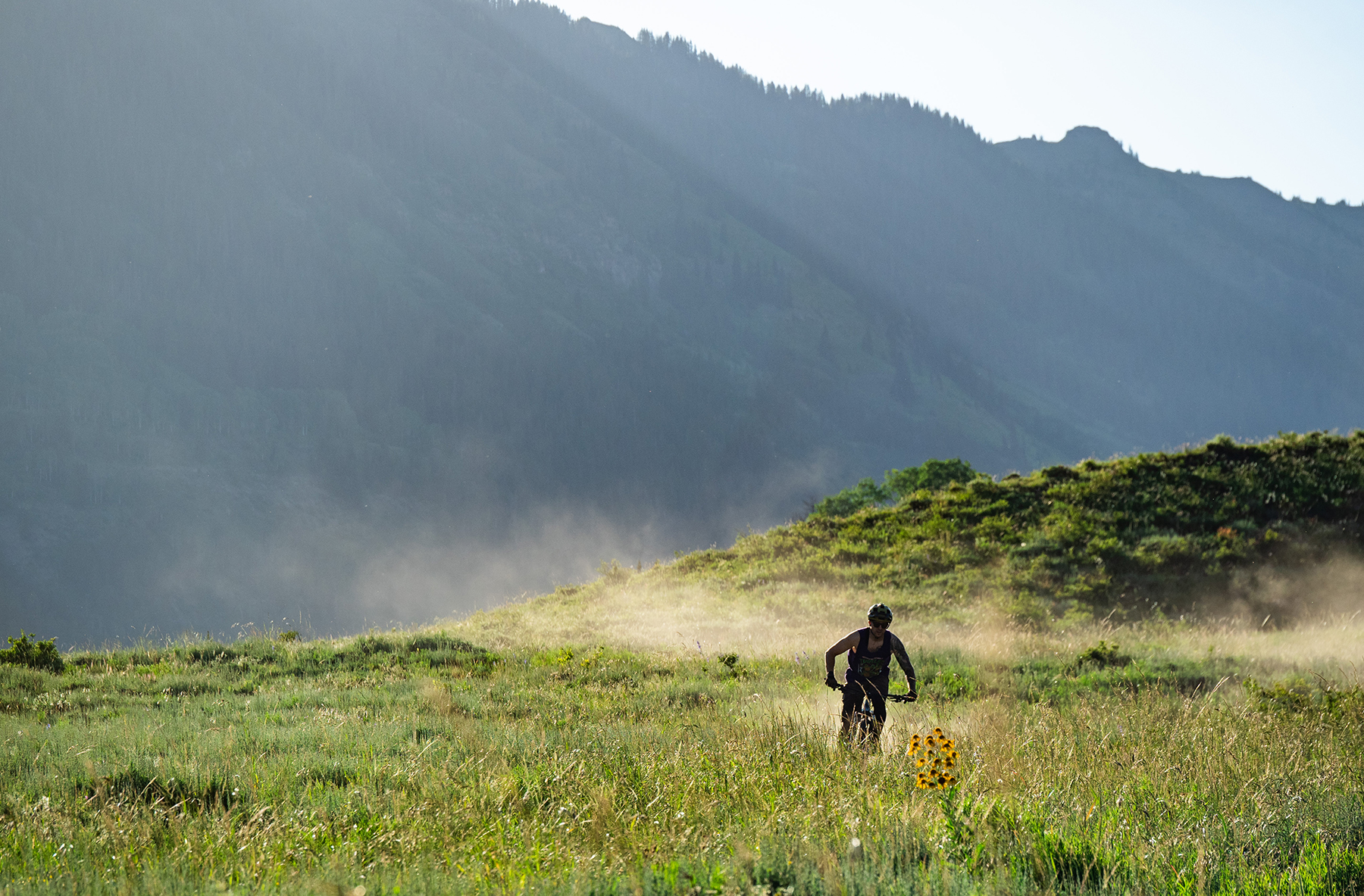
Sizing and Fit
Installation of the LoamLab grips and Counterpunch bar ends was straightforward. Installing the grips themselves is a simple affair and nothing you haven’t seen before. You do want to pay attention to the clamp position on your bar (in terms of rotation around the bar), as the grips are eccentric to the bars, but that’s it. The Counterpunch bar ends themselves will feel familiar to anyone who has put a set of bar ends on a bike before. For those of you who haven’t, easy-to-follow instructions are included. The combo uses split wedges to keep everything tight and stable, so just making sure the wedges are seated correctly will help keep the Counterpunch ends in place and from rotating.
I will note that it does take quite a bit of clamping force on the Counterpunch bolts to keep them from rotating on your handlebar. This can feel a bit scary with carbon bars, though it’s important to note that the Counterpunch is secured with an expanding wedge inside the bar, not by clamping around the outside of it. That’s probably a safer way to go for high loads on carbon parts, but still, I don’t think I’m the first to feel some concern because LoamLab has made a video addressing the topic. But check your bar manufacturers’ torque specs, and decide for yourself how you feel about exceeding those.
Performance
The LoamLab grips are thin, at 29 mm in diameter, and short, at 115 mm long. The slightly shorter overall length makes positioning your other handlebar controls easy, and the thinner diameter has helped to reduce my hand fatigue. The rubber used in the grips is tacky without falling apart in my hands, didn’t get slippery when wet, and it also does a good job of not feeling vague or twisting under my hand while riding (as some grips with thicker rubber can).
To address their biggest selling point, I would agree that the reshaping of the inner core of the grip, and the placement of the material as a result of that reshaping, does result in a grip that feels very comfortable and cushioned, given that it is both a lock-on and quite thin. Is it more comfortable than a slide-on (like an ESI)? No, but it is certainly more comfortable than something like an ODI Ruffian. And compared to slide-on grips, the LoamLab grips have the added benefit of two locking collars to help keep the grips from moving or twisting. It does what it says it does.
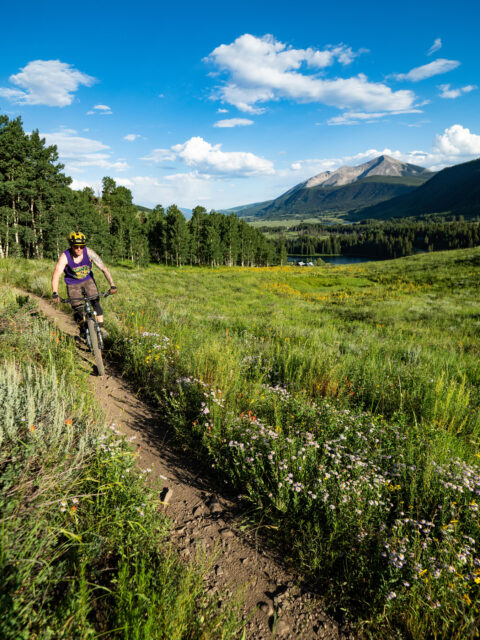
The Counterpunch bar ends are a unique but pretty trick piece of kit, too. Way lower profile than the bar ends of old, or the MX-inspired MTB handguards of today, they do work as advertised. Twice so far this year, I have caught large trailside rocks with my bar while riding fast and trying to maintain #maxiumumattack, and both times I have stayed upright with my finger and gloves intact. One of those impacts I am quite certain would have thrown me from the bike. The other wouldn’t have felt good either. The Counterpunch’s curved surface design does absolutely help to keep the bar end from grabbing on whatever you happen to be impacting.
While I don’t notice my cornering habits changing dramatically, and I’m not aware of experiencing increased control as a result of having my pinkies more locked in, I have appreciated the increased number of hand positions I can enjoy with these stubby bar ends. You still sometimes see versions of them with bike packers and ultra riders these days, but I secretly miss bar ends while climbing. Sometimes. The Counterpunches are a much more unobtrusive and low-profile option that still gives you the ability to hook your thumbs or rotate your wrists out more to open up your chest, or use your upper body with less grip force exerted on the bars while climbing. It’s not necessary, but I take advantage of it.
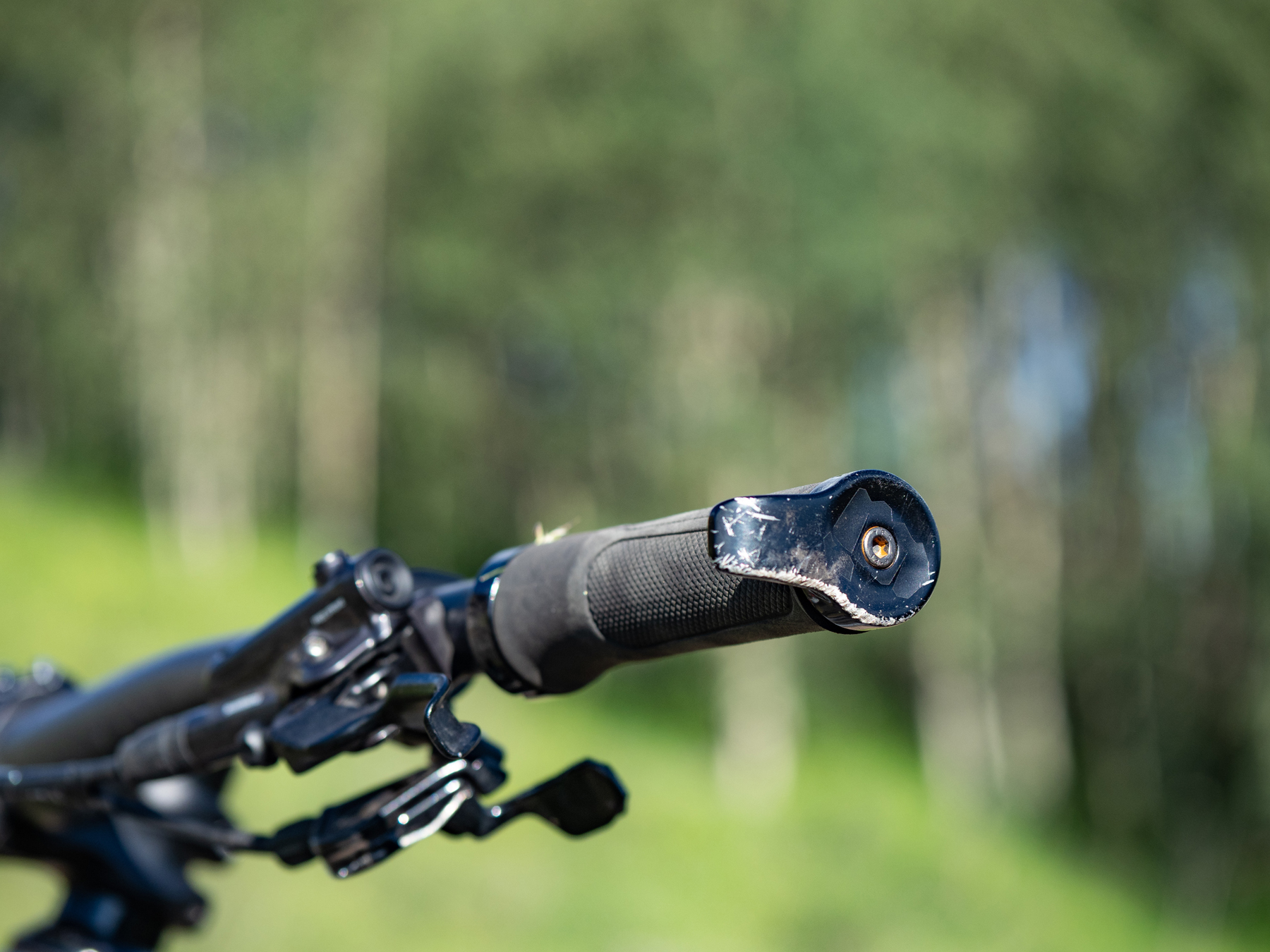
Durability
I have found the rubber used in the LoamLab grips to be slightly grippier than average but it has held up well to ~400 miles of riding so far. It feels like a fairly soft durometer, but hasn’t managed to be cut or marred in the process of use, leaning my bike against stuff, or crashing into the ground.
The LoamLab Counterpunch bar ends have held up to two true (i.e., unintended) impacts, and upon removing them to inspect my bars, they have appeared to help in protecting the carbon underneath from damage, as well as my fingers. You can see from the photos below that these bar ends have had a couple of significant impacts, and other than some scoring on the metal, are no worse for wear and continue to clamp tightly and stay in place.
Bottom Line
Are grips with eccentric rubber placement or bar ends that help save your fingers and potentially your bar from impacts with solid objects necessary? Strictly speaking, no. But I’d put another pair of LoamLab grips on my personal bike when these are toast, and I am truly glad to have had the Counterpunch bar ends on my bike on two occasions already this summer.

Tried these for the counter punch and was very impressed by the grips themselves. Customer service is great too.
I’ve been using those for over a year now, and yes they protect your hand and love that features, put they also help cornering I find. Hand is more secured, locked in place. Grips have been long lasting too, seriously impressed.
I have had them for 2 seasons now too, and love them.
I have not used the grips yet.
They indeed protect your pinkie, and make it less likely to snag a bar and crash.
Other benefit is the offer some protection for the end of the grip, if you crash or just lay the bike down somewhere.